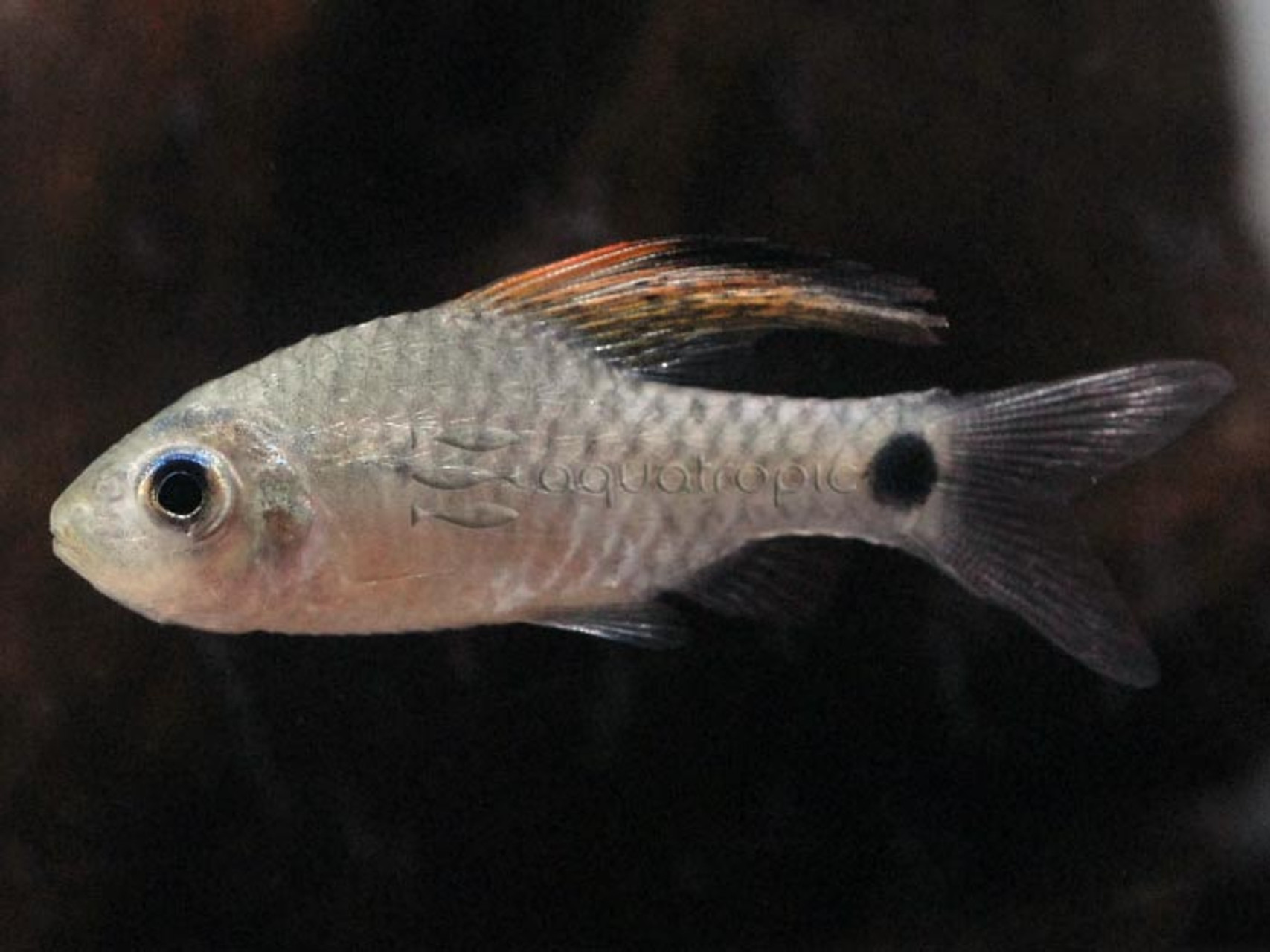Drapefin Barb (Oreichthys crenuchoides)

The Drapefin Barb is a classic example of a species that would be far more popular among aquarists if it could first be seen in its resplendent adult form. The small drab juveniles typically seen for sale are just a prelude to what’s to come as this fish matures. Large males will ultimately develop an enormously enlarged dorsal fin, almost as large as the fish itself, and it will use this to compete for females. The effect is similar to the dramatic finnage and behavior of the Sailfin Molly (Poecilia latipinna), and it is especially similar to South America’s Sailfin Tetra (Crenuchus spilurus), from which the species name Oreichthys crenuchoides arises. It’s an impressive example of convergent evolution.
Oreichthys is a small genus, with just seven recognized species presently, all of which are restricted to the warm tropical waters of India and Southeast Asia. The group is still poorly known, with reports of several undescribed populations still waiting to be named across this range. And it isn’t especially clear who these fishes are related to or even what defines the genus. Some unusual features are the presence of sensory papillae on the head (absent in most cyprinids) and, in most species, an abbreviated lateral line.
Not all Oreichthys have the elegant finnage of the Drapefin Barb, and it’s really only in O. crenuchoides that this feature is developed. The species was described in 2009 from a small, mud-bottomed tributary of the Brahmaputra River in West Bengal India, near to the border with Bangladesh. The region is home to the famous Buxa Tiger Preserve, which seems like a rather dangerous place to go fishing for small minnows. That might explain why it took until 2009 for someone to take the effort to find it.
Aquarium care for this lovely little fish is not much different from the typical tropical barb. A moderately sized group stocked with a few more females than males is recommended. This is important, as males are highly competitive with one another. An interesting behavior in this group is the presence of “sneaker males” which maintain a female-like shape to their dorsal fin and body, allowing them to avoid interactions with large, dominant males and to mate with females unimpeded. Devious!
The species is, however, on the timid size, and with a maximum size of little more than an inch in length, this is one species which is poorly suited to a boisterous community aquarium. Only peaceful tankmates should be considered. Aside from this, there is no great challenge in its husbandry. A mixed diet of frozen and dry foods is adequate, and eggs are scattered on foliage when breeding commences.